ECB released data today indicating a slight decrease in negotiated wage growth to 4.46% in Q4, marking a downturn from the previous quarter’s record high of 4.69%. This development, though modest, is likely to be greeted positively by ECB policymakers, signaling a potential onset of wage growth deceleration anticipated throughout the year.
Despite the reduction, the magnitude of the drop is not substantial enough to prompt ECB to consider an immediate rate cut in March. The data presents a cautious optimism rather than a clear-cut rationale for policy easing. If ECB’s more hawkish members advocate for further evidence of wage growth deceleration, preferring to wait for the next wage data release in May, the likelihood shifts towards a rate cut in June, rather than April, as the more plausible timeline for monetary policy adjustment.
EUR/USD bounces further in European session and the break of 1.0804 resistance argues that a short term bottom was formed at 1.0694, on bullish convergence condition in 4H MACD. Further rebound is now in favor to 55 D EMA (now at 1.0832). Sustained break there will argue that whole fall from 1.1138 has completed and bring stronger rally back to this resistance.




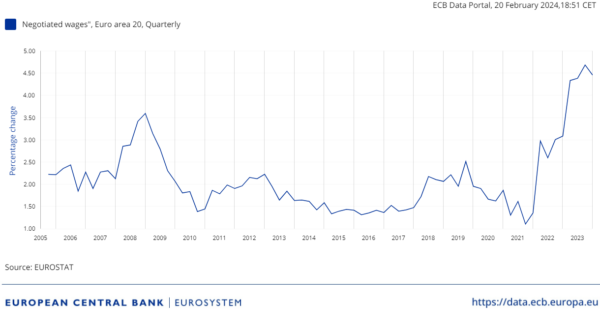
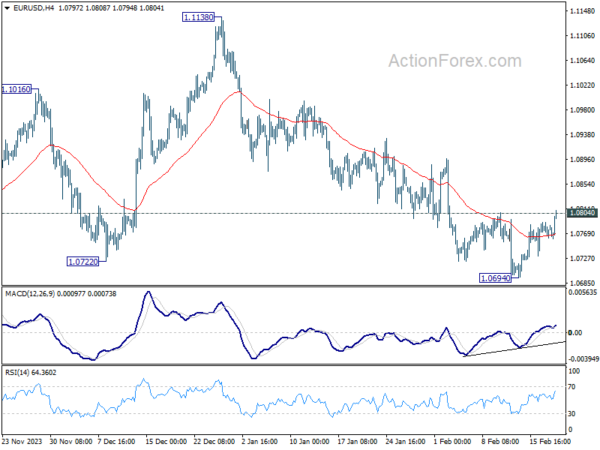
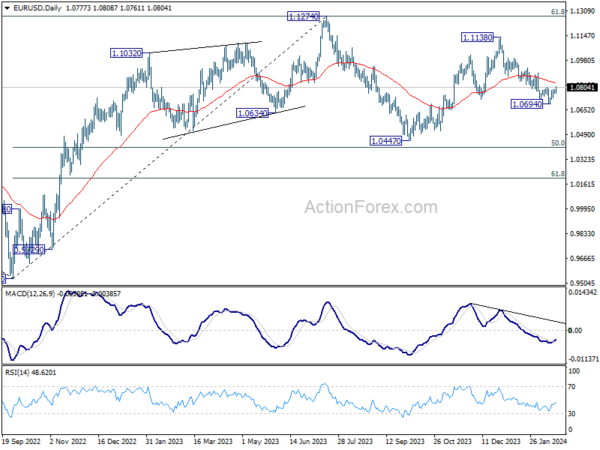
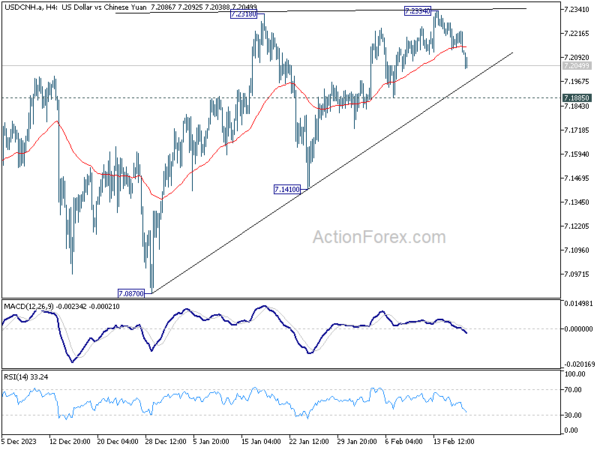
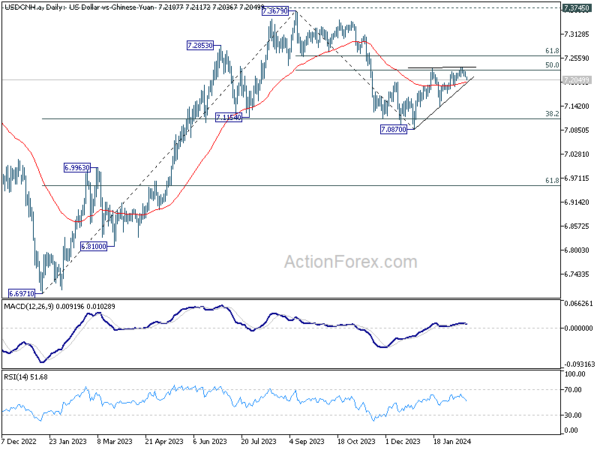
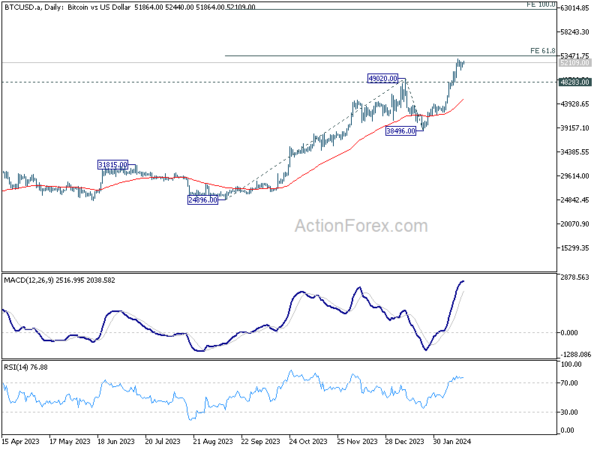
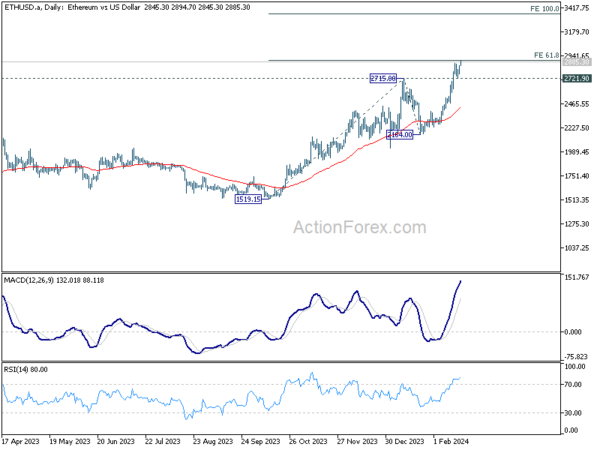
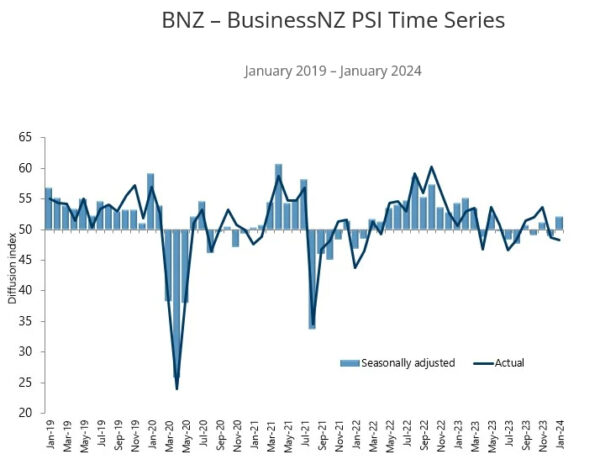
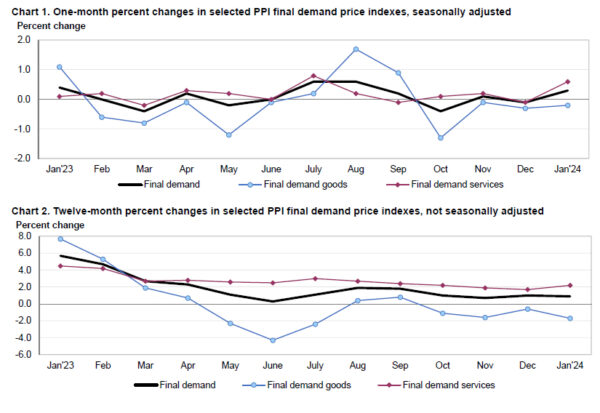
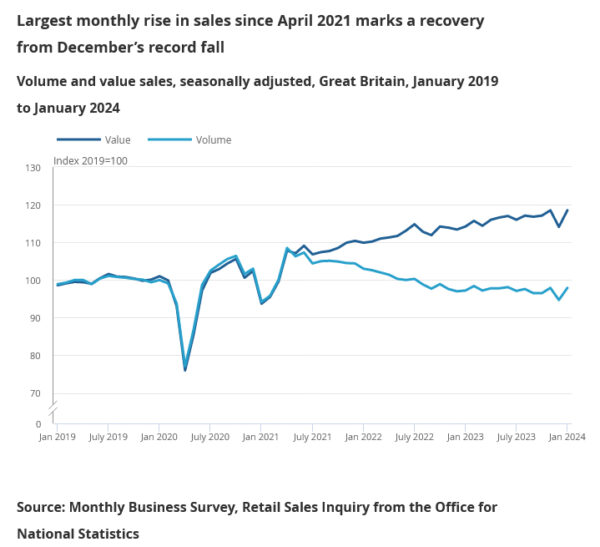
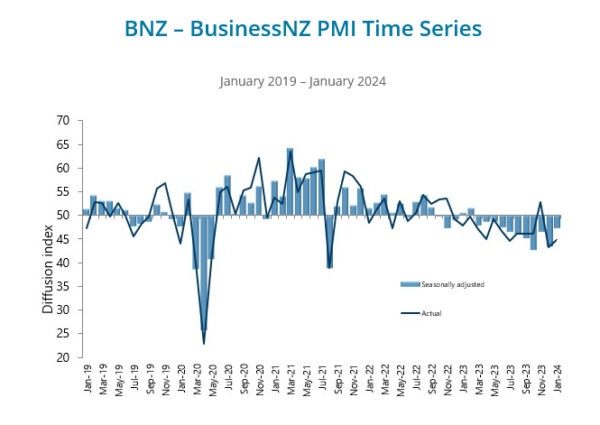
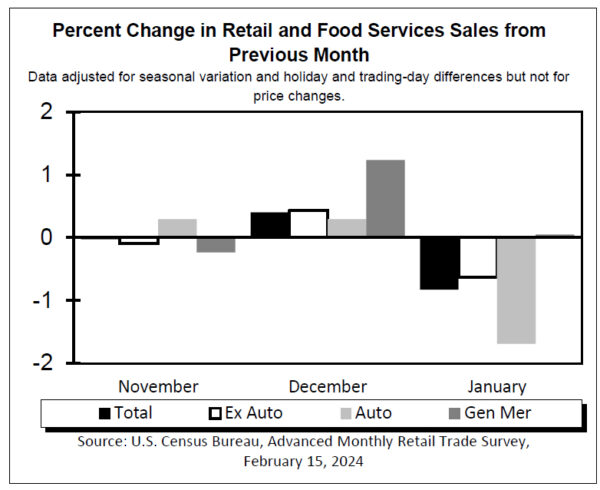
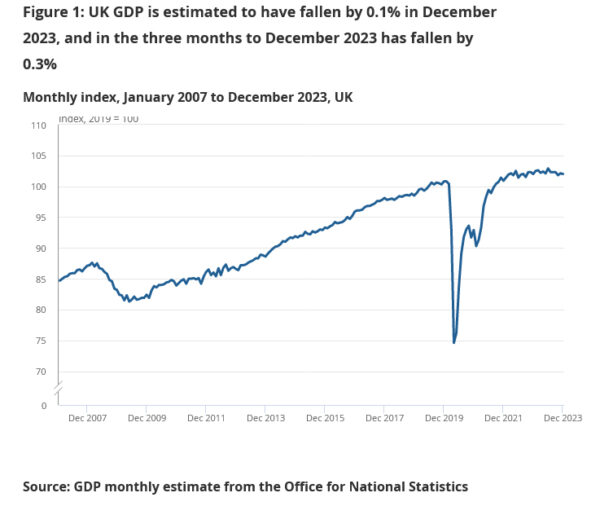

BoE Bailey: Market’s rate cut outlook not unreasonable, yet unendorsed
In a session with the Treasury Select Committee today, BoE Governor Andrew Bailey acknowledged that It’s “not unreasonable” for the market to think about reductions in interest rates this year
However, he was quick to qualify this by stating that MPC “do not endorse the market curve” forecasting such cuts, adding that “we are not making a prediction of when or by how much” BoE cuts interest rates.
Bailey pointed to “encouraging signs” in key economic indicators, but stressed the importance of “sustained progress” in tackling inflation.
Addressing recent data indicating the UK’s entry into a technical recession in the latter half of the previous year, Bailey downplayed its impact, describing the downturn as “very weak” and pointing to “distinct signs of an upturn.”